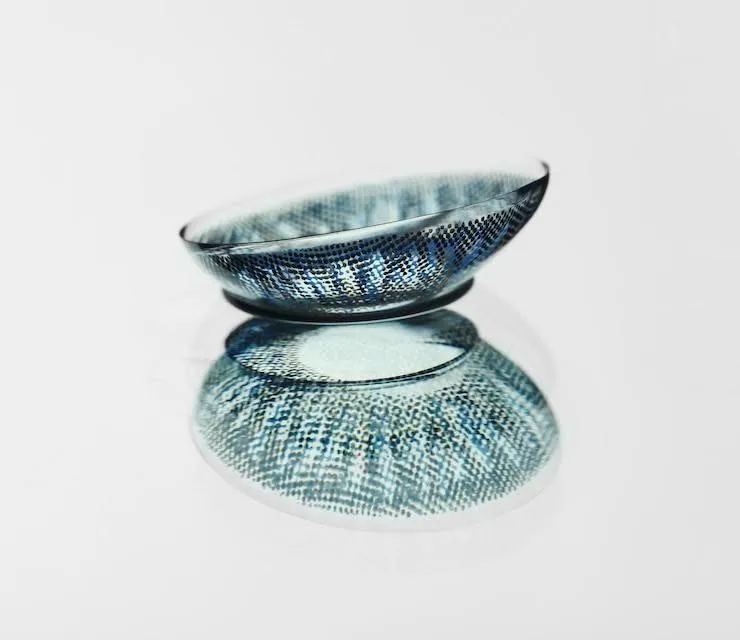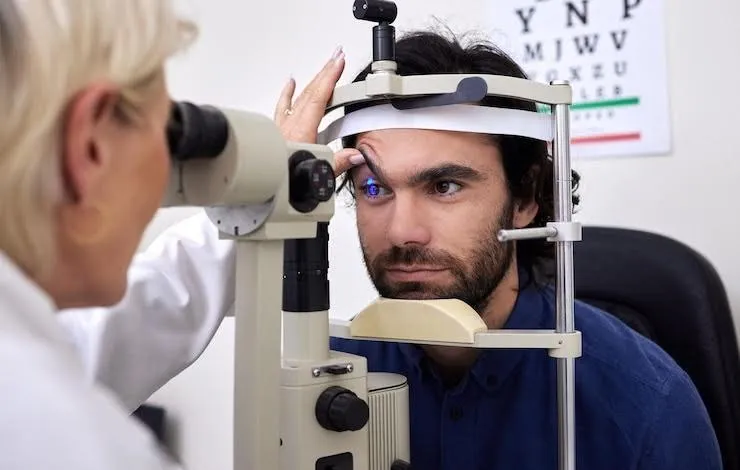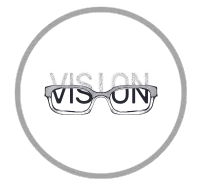NeuroLens care
Why NeuroLens Recalibrations Improve Visual Comfort
FSDAVCFEBFEVSDDVFSD
FSDAVCFEBFEVSDDVFSD
FSDAVCFEBFEVSDDVFSD
What Causes Alignment Changes?
Most NeuroLens wearers notice improvements quickly, but adjustments over time are normal. One common reason for prism misalignment is extended screen use. Digital devices strain the eyes, causing subtle shifts in visual coordination. Other factors like posture changes, stress, and eye fatigue can also impact how your eyes align.
Our visual system is dynamic—it responds to lifestyle and environmental demands. If you notice returning symptoms like headaches, neck tension, or eye strain, it may indicate your prism alignment needs to be checked. That’s why routine follow-up appointments are an essential part of NeuroLens success. A small tweak in prism values can make a big difference in comfort.
Most NeuroLens wearers notice improvements quickly, but adjustments over time are normal. One common reason for prism misalignment is extended screen use. Digital devices strain the eyes , causing subtle shifts in visual coordination. Other factors like posture changes, stress, and eye fatigue can also impact how your eyes align.

Our visual system is dynamic—it responds to lifestyle and environmental demands. If you notice returning symptoms like headaches, neck tension, or eye strain, it may indicate your prism alignment needs to be checked. That’s why routine follow-up appointments are an essential part of NeuroLens success. A small tweak in prism values can make a big difference in comfort.

When to Schedule a Retune
Regular follow-ups are a key part of getting the most out of your NeuroLens prism lenses. These lenses are highly personalized, designed to match your unique visual alignment needs. However, even small changes in your daily routine—like increased screen time, a shift in work environment, or new reading habits—can affect how your eyes function together. When this happens, recalibration may be necessary to maintain comfort and symptom relief.
If symptoms such as blurry vision, eye fatigue, shoulder tension, or headaches begin to return, it's a clear signal to schedule a check-in. These discomforts often point to slight changes in your visual demand that may require fine-tuning your prism prescription.
Most patients find their first recalibration beneficial within the first three to six months of starting NeuroLens. After that, occasional adjustments help ensure lasting comfort. At Kleinwood Vision, we use advanced diagnostic tools and carefully track your symptom history to determine the right time for recalibration. Our proactive approach helps patients stay ahead of discomfort and continue experiencing the full benefits of NeuroLens technology. Regular follow-up care not only keeps your lenses aligned with your needs—it also supports your overall visual well-being as your lifestyle evolves.
Symptoms That Signal a Shift

Our eyes are constantly working behind the scenes to balance input from both sides, ensuring clear and comfortable vision. However, when visual demands shift—such as spending more time on screens or changing daily routines—this balance can be disrupted. As a result, misalignment symptoms like eye strain or fatigue can quietly return without notice.
If you’re experiencing increased digital fatigue, eye tension, or the return of headaches, it may be time to recalibrate your prism lenses.

These signs suggest that your eye alignment has changed and your current lenses may no longer be providing the support they once did. A quick check-in with your eye care provider can help restore comfort and ensure your lenses continue to meet your needs. Regular follow-up care is key to maintaining visual clarity and keeping symptoms from interfering with your daily life.
Staying alert to your body’s feedback is essential for maintaining optimal eye health and comfort. Paying close attention to symptoms such as eye strain, headaches, blurred vision, or neck and shoulder tension can provide important clues about how well your current lenses are working. It’s especially important to observe how these symptoms relate to your device usage, as prolonged screen time can significantly impact visual alignment and eye fatigue. By tracking these patterns and sharing them with your optometrist, you enable them to make precise adjustments to your prism lenses or prescription, ensuring that your vision remains clear and comfortable.
Regular communication and monitoring help create a personalized approach to your eye care, allowing your lenses to adapt alongside your lifestyle changes. This proactive strategy supports long-term relief and prevents symptoms from worsening over time. Remember, your eyes are dynamic, and their needs can shift as your daily activities evolve. Working closely with your eye care professional to fine-tune your lenses is key to maintaining balanced visual alignment and enhancing your overall quality of life.
Understanding the Follow-Up Process Steps
Adjusting NeuroLens lenses is a straightforward process designed to provide your eyes with the best possible support. During your follow-up appointment, your optometrist will perform updated NeuroLens Measurement Testing to detect any changes in your eye alignment since your last visit. This precise testing identifies even subtle shifts that may impact how your lenses work with your vision. Based on these measurements, your doctor can fine-tune the prism component of your NeuroLens lenses to better match your current visual needs.
This adjustment helps reduce symptoms like eye strain, headaches, and neck tension, improving overall comfort. You’ll also review your symptom history during the appointment to help your optometrist understand how well your lenses are performing and whether further adjustments are necessary. Many patients find that even minor recalibrations significantly enhance comfort and support long-term visual wellness. Regular follow-ups and timely retuning are essential to keep your NeuroLens lenses optimized and maintain sustained relief as your daily visual demands evolve.
Understanding Prism Function in NeuroLens
Prism correction helps align the way light enters your eyes, reducing strain on your visual system. NeuroLens uses a contoured prism to provide precise correction that supports natural eye alignment.
Life changes, like increased screen use or stress, can alter how your eyes work together. These shifts may cause a mismatch between your current prism setting and your new visual habits. A retune adjusts this alignment, often providing quick symptom relief.
By monitoring your comfort and reporting changes, you help your doctor make accurate prescription adjustments. This ability to fine-tune
NeuroLens lenses is what makes them an effective solution for managing chronic digital eye strain and alignment issues. Regular check-ins ensure your lenses continue to support your vision needs as they evolve.
Prism correction helps align the way light enters your eyes, reducing strain on your visual system. NeuroLens uses a contoured prism to provide precise correction that supports natural eye alignment.
Life changes, like increased screen use or stress, can alter how your eyes work together. These shifts may cause a mismatch between your current prism setting and your new visual habits. A retune adjusts this alignment, often providing quick symptom relief.


By monitoring your comfort and reporting changes, you help your doctor make accurate prescription adjustments. This ability to fine-tune NeuroLens lenses is what makes them an effective solution for managing chronic digital eye strain and alignment issues. Regular check-ins ensure your lenses continue to support your vision needs as they evolve.
When Life Changes, Vision May Too
Changes in lifestyle can significantly affect how well your eyes perform. If you’ve recently started spending longer hours in front of screens or are reading more frequently, your eyes may respond differently to these increased visual demands. NeuroLens lenses are designed to adapt with you, but to maintain their effectiveness, occasional follow-up appointments are necessary. These check-ins help ensure your lenses continue to provide the best support for your current habits and visual needs.
Stress and fatigue also influence your eye health. When your body is under pressure, your eyes may strain to compensate, which can alter the way they work together, a process called eye teaming. This shift in visual alignment can reduce how well your lenses correct your vision, potentially leading to symptoms like headaches, blurry vision, or eye discomfort. Recognizing these changes early is crucial for maintaining optimal eye comfort.
If you experience a return or worsening of symptoms, don’t wait until your next scheduled eye exam. Booking a NeuroLens follow-up allows your optometrist to assess whether a recalibration is needed to realign your lenses with your current visual system. Timely adjustments help prevent unnecessary discomfort and ensure you continue to benefit from the relief NeuroLens provides.
At Kleinwood Vision, we emphasize ongoing NeuroLens care tailored to your lifestyle, symptoms, and vision requirements. Our team is dedicated to helping patients maintain clear, comfortable vision over time, adjusting treatments as needed to keep up with evolving visual demands. This personalized approach helps you achieve long-term visual wellness.
Importance of Regular Routine Checks
Routine NeuroLens checkups are important, even if you don’t notice any problems. Subtle changes in eye alignment can develop slowly over time and may eventually cause discomfort or vision issues. Regular appointments and comprehensive eye exams help detect these shifts early, allowing adjustments to be made before symptoms arise.
Adjustments to your NeuroLens lenses are not a sign of failure. Instead, they indicate personalized care that adapts to your eyes’ changing needs. Patients who keep up with their follow-up visits often enjoy longer-lasting relief from symptoms and more stable vision, highlighting the importance of ongoing care.

Routine NeuroLens checkups are important, even if you don’t notice any problems. Subtle changes in eye alignment can develop slowly over time and may eventually cause discomfort or vision issues. Regular appointments and comprehensive eye exams help detect these shifts early, allowing adjustments to be made before symptoms arise.
Adjustments to your NeuroLens lenses are not a sign of failure. Instead, they indicate personalized care that adapts to your eyes’ changing needs. Patients who keep up with their follow-up visits often enjoy longer-lasting relief from symptoms and more stable vision, highlighting the importance of ongoing care.
If you’re frequently on the move or prefer not to wear glasses, multifocal contacts offer more freedom and convenience. They provide clear vision at multiple distances without the need for switching glasses, making them ideal for active lifestyles.
By making routine adjustments, small refinements can be made that prevent discomfort later on. Staying consistent with your NeuroLens care helps maximize the benefits of your lenses, reduce long-term eye strain, and maintain clear, comfortable vision. This proactive approach supports your overall eye health and ensures lasting comfort.
Patient Next Steps and Guidance
If you’re already wearing NeuroLens and notice familiar symptoms starting to return, it may be time for a recalibration. Changes in your vision or comfort can develop slowly, so it’s important to pay attention to these early signs. Scheduling a NeuroLens follow-up visit ensures your current prism prescription is carefully reassessed, allowing us to make any necessary adjustments to keep your visual system balanced and comfortable.
At Kleinwood Vision, we focus on maintaining your eye health by providing timely updates to your NeuroLens lenses. Early adjustments help prevent discomfort from becoming chronic and support continued symptom relief. Don’t wait until the discomfort worsens—regular follow-ups enable us to fine-tune your lenses, ensuring they work effectively with your eyes’ changing needs. By staying proactive with your NeuroLens care, you can enjoy better long-term results, improved vision stability, and ongoing comfort.

Contact Info
Hours of Operation
Mon - Fri | 9:00 AM - 5:00 PM
Sat - Sun | Closed
Holiday Hours: We are closed for the following holidays: New Years Day, Memorial Day, Independence Day, Labor Day, Thanksgiving Day, Christmas Day
© 2025 Kleinwood Vision. All rights Reserved.


